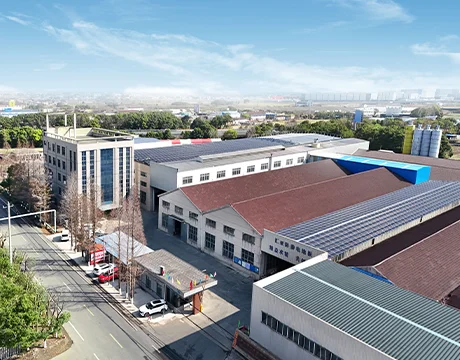With the advent of the digital age, data centers play a key role, providing ubiquitous connectivity and information storage for our modern lives. A data center is a huge facility that stores thousands of servers and network equipment. In order to ensure its normal operation and security, its carrying capacity must be accurately calculated and evaluated.
In data center design, raised floors are widely used to provide a flexible solution that can adapt to changing technology needs and hardware configurations. However, the design and load-bearing capacity of raised floors is a complex and concerning issue. How to determine the load-bearing capacity of a data center’s raised floor and comply with applicable load standards has become a key factor in building and maintaining an efficient and reliable data center.
This article will discuss the importance and methods of load calculation for data center raised floors, focusing on the calculation of load-bearing capacity and the applicability of load standards. We’ll take an in-depth look at raised floor construction, material properties, and important factors related to data center operations. In addition, this article will introduce internationally accepted load standards, such as the guidelines of the Society of Construction (ASCE), the International Society of Mechanical Engineers (ASHRAE), etc.
Understanding the load-bearing capacity and load standards of the data center raised floor is crucial to ensuring the safe and reliable operation of the data center. Through in-depth research and careful analysis, we can provide the necessary guidance for the design, construction and maintenance of data centers and ensure that they perform at their best in the evolving digital era.
Data Center Floor Weight Capacity Considerations
The weight capacity of a raised floor in a data center varies depending on several factors, including the type of flooring system, construction materials, and design specifications. In general, raised floors in data centers are designed to support heavy loads to accommodate servers, networking equipment, and cabling. Here are some general guidelines and considerations:
- Type of Raised Floor System: There are different types of raised floor systems, including steel and concrete-filled panels, perforated tiles, and lightweight panels. The weight capacity will vary depending on the type of panels used.
- Panel Load Ratings: Manufacturers typically provide load ratings for their raised floor panels. These load ratings are often specified in pounds per square foot (PSF) or kilograms per square meter (Kg/m²). Common load ratings for raised floor panels can range from 1,000 PSF (approximately 48 Kg/m²) to 2,500 PSF (approximately 120 Kg/m²) or even higher.
- Layout and Support Structure: The layout and support structure of the raised floor system play a crucial role in determining its weight capacity. Adequate support structures, pedestals, and reinforcement are essential to ensure that the floor can support the intended loads.
- Equipment Weight: Consider the weight of the data center equipment, including servers, racks, cabinets, and other infrastructure components that will be placed on the raised floor. Ensure that the combined weight of all equipment does not exceed the load rating of the floor panels.
- HVAC and Cabling: Data center raised floors also need to support the weight of HVAC (heating, ventilation, and air conditioning) equipment and cabling. These loads should be factored into the design and weight capacity calculations.
- Future Expansion: Plan for future expansion and ensure that the raised floor can accommodate additional equipment and weight as the data center grows.
- Safety Margins: It’s advisable to have safety margins when calculating weight capacities to account for unexpected loads or equipment changes.
- Professional Engineering: It’s essential to involve professional engineers and architects in the design and assessment of raised floor systems, especially in large and critical data center environments.
It’s crucial to consult with the raised floor manufacturer and involve structural engineers or experts in data center design to determine the specific weight capacity and load-bearing capabilities of your raised floor system. The exact weight capacity will depend on the specific configuration and materials used in your data center’s raised floor.
What is the Weight Capacity of Data Center Raised Floor?
The weight capacity of a data center raised floor can vary widely depending on the specific design and materials used. Generally, raised floors in data centers are designed to support loads ranging from 1,000 pounds per square foot (PSF) to 2,500 PSF or more. Here’s a breakdown of weight capacity ranges:
- Light-Duty Raised Floors: These types of raised floors can typically support loads of up to 1,000 PSF. They are suitable for areas where the equipment and traffic loads are relatively light, such as office spaces within a data center facility.
- Standard-Duty Raised Floors: Standard raised floors are designed to handle loads in the range of 1,250 PSF to 1,500 PSF. These are commonly used in data center environments to support server racks, cabinets, and moderate equipment loads.
- Heavy-Duty Raised Floors: Heavy-duty raised floors are capable of supporting loads between 1,500 PSF and 2,500 PSF. These are often used in areas with high-density server installations and heavier equipment, like large storage systems.
- Ultra-Heavy-Duty Raised Floors: Some data centers may require raised floors with even higher weight capacities, exceeding 2,500 PSF. These floors are designed for extremely dense server environments or to accommodate particularly heavy equipment.
It’s important to note that the specific weight capacity of a raised floor can be influenced by various factors, including the type of floor panels, the support structure, the layout, and the quality of installation. When designing or assessing a data center’s raised floor system, it’s crucial to consult with structural engineers and adhere to the manufacturer’s guidelines and specifications. Additionally, the weight distribution across the floor and the placement of heavy equipment must be carefully planned to ensure that the load is evenly distributed and within the floor’s capacity. Regular inspections and maintenance are also essential to ensure that the raised floor continues to meet its weight capacity requirements over time.
Data Center Raised Floor Loading Standards
Data center raised floor loading standards are designed to ensure the structural integrity and safety of the data center environment. These standards provide guidelines for the maximum weight that can be safely supported by the raised floor system. Here are some commonly referenced loading standards for data center raised floors:
- The Raised Floor Manufacturers Association (RFMA) standard ANSI/ESD S20.20: This standard specifies the requirements for electrostatic discharge (ESD) control programs, including guidelines for raised floor loading based on the intended use of the space.
- The Telcordia GR-63-CORE standard: This standard provides guidelines for the design and installation of network equipment in telecommunications facilities. It includes loading requirements for raised floors to ensure the stability and performance of the installed equipment.
- The European Standard EN 12825: This standard specifies performance requirements and test methods for raised access floors. It includes guidelines for design loads, concentrated loads, uniform load distribution, and vibration resistance.
Specific requirements may vary depending on the jurisdiction, local building codes, and the specific design and usage of the data center. It is advisable to consult with a structural engineer, data center consultant, or the manufacturer of the raised floor system to ensure compliance with the relevant loading standards for your specific data center project.
Data Center Raised Floor Loading Calculation
Calculating the load capacity of a raised floor system in a data center is critical to ensure it can support the weight of the equipment and infrastructure housed within the data center. The raised floor system typically consists of panels supported by pedestals, and understanding its load-bearing capacity is essential for both safety and operational reasons.
Here are the steps to calculate the raised floor loading capacity:
1. Determine the Required Load Capacity:
Start by listing all the equipment, cabinets, and infrastructure that will be placed on the raised floor. This includes servers, racks, storage units, cooling equipment, power distribution units, and any other heavy items. Determine the weight of each item in pounds or kilograms.
2. Calculate the Total Load:
Sum up the weights of all the equipment and infrastructure that will be placed on the raised floor. This will give you the total load that the raised floor system must support.
3. Check the Manufacturer’s Specifications:
Refer to the manufacturer’s specifications for the raised floor panels and pedestals. These specifications should provide information on the load-bearing capacity of the system. Make sure to consider both the weight-bearing capacity of the individual panels and the pedestals.
4. Factor in Safety Margin:
It’s a good practice to include a safety margin in your calculations. This margin accounts for any unexpected additional loads or variations in weight distribution. Typically, a 20-30% safety margin is added to the total load.
5. Calculate the Load per Panel:
Divide the total load by the number of floor panels that will be supporting the load. This will give you the load per panel. Keep in mind that the weight distribution may not be uniform, so consider the placement of heavy equipment.
6. Verify the Load-Bearing Capacity:
Ensure that the calculated load per panel does not exceed the load-bearing capacity specified by the manufacturer for both the panels and pedestals. If the calculated load is greater than the rated capacity, you may need to reinforce the raised floor system or consider other structural solutions.
7. Consult a Structural Engineer (if necessary):
For larger data centers or if the calculated load is significantly high, it’s advisable to consult with a structural engineer. They can perform a more detailed analysis of the floor’s load-bearing capacity and recommend any necessary structural modifications.
8. Regular Maintenance and Inspections:
After the raised floor system is installed, conduct regular inspections to ensure that it continues to meet its load-bearing capacity. Over time, changes in equipment or configurations may require adjustments.
Keep in mind that data center design and requirements may vary, so it’s essential to work closely with the manufacturer, consult industry standards, and consider any specific guidelines or regulations applicable to your region or industry. Additionally, professional structural analysis and engineering expertise may be necessary for large or complex data center environments.
Huiya Real-Time News
Huiya Real-Time News is dedicated to providing you with the latest and most authoritative information on the raised flooring industry.
We provide 24/7 updates on industry policy interpretations, market trend analysis, company news.

匯亜、新たに塩霧試験装置を導入 OAフロアの品質防線を強化

회아, 새 염무시험장비 도입해 이중바닥재 품질 방호선 단단히 만듦

창주 회아 이중바닥재 회사, 한국 KSA 인증 획득하며 이중바닥재 공식 한국 수출 시작
MORE DOWNLOADS

GENERAL CATALOGUE

HUIYA INTRODUCTION

HUIYA GREEN LABEL

CAD/BIM FULL STEEL
APPLICATION SCENARIOS








